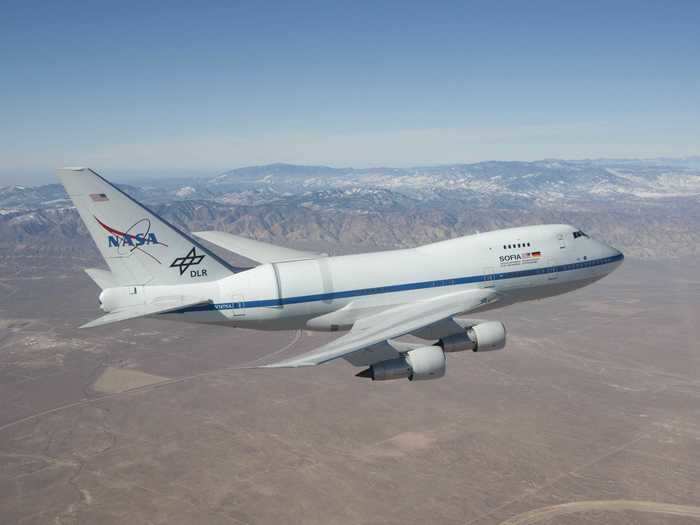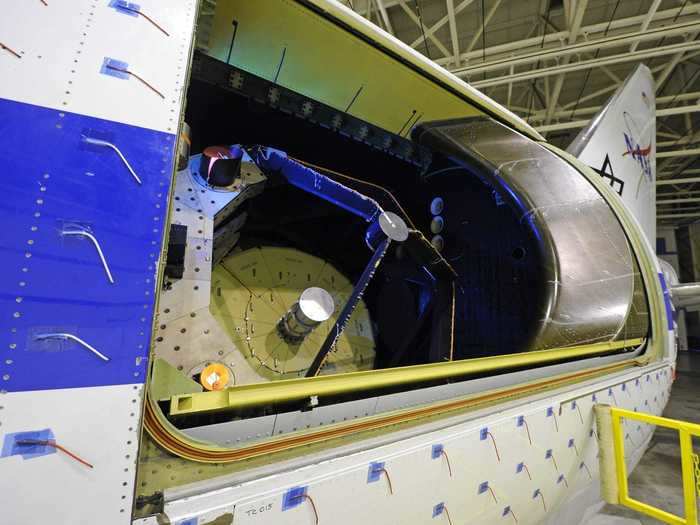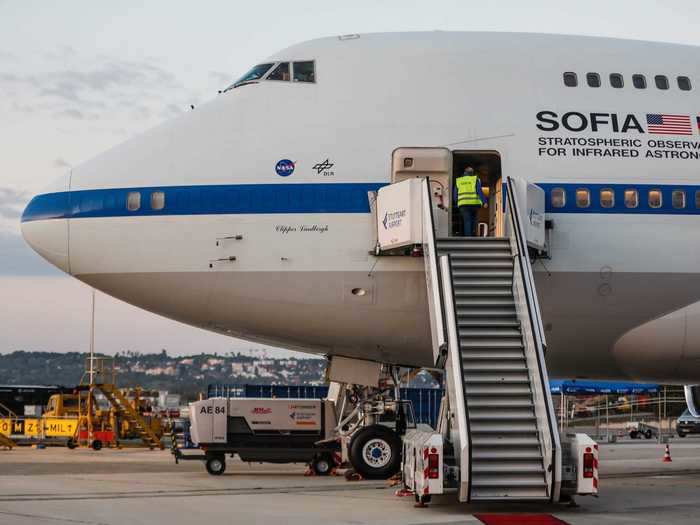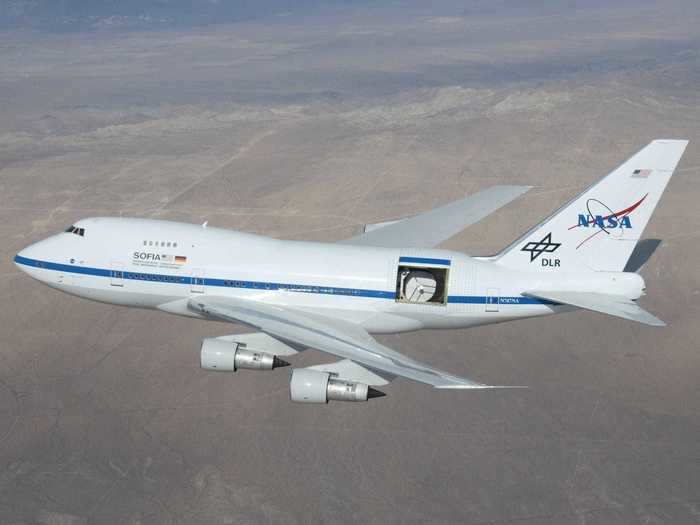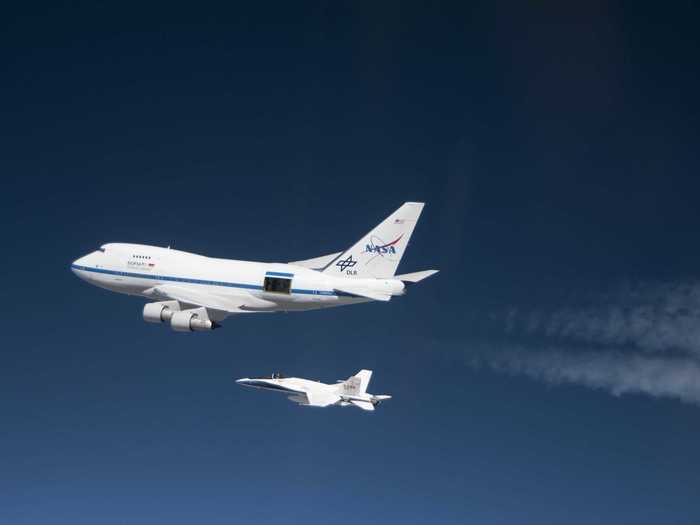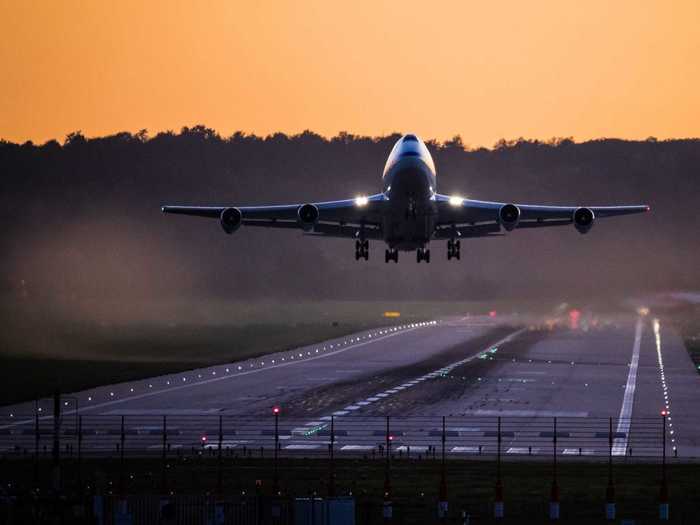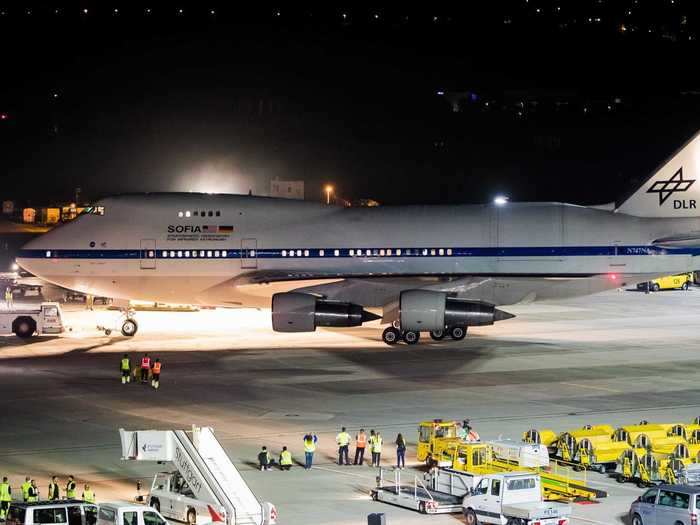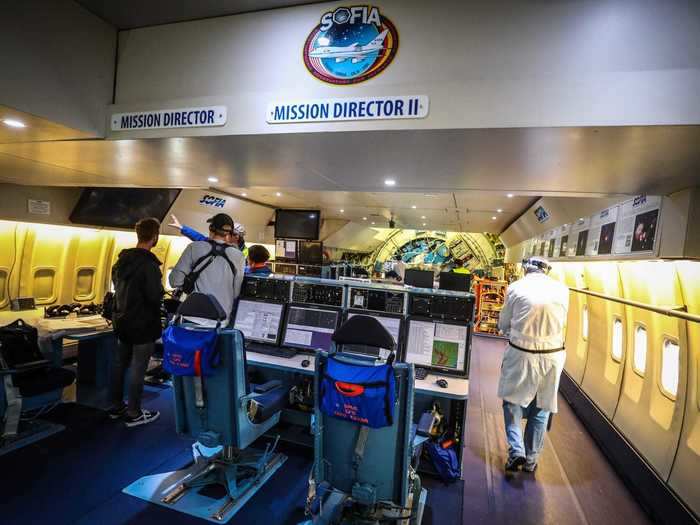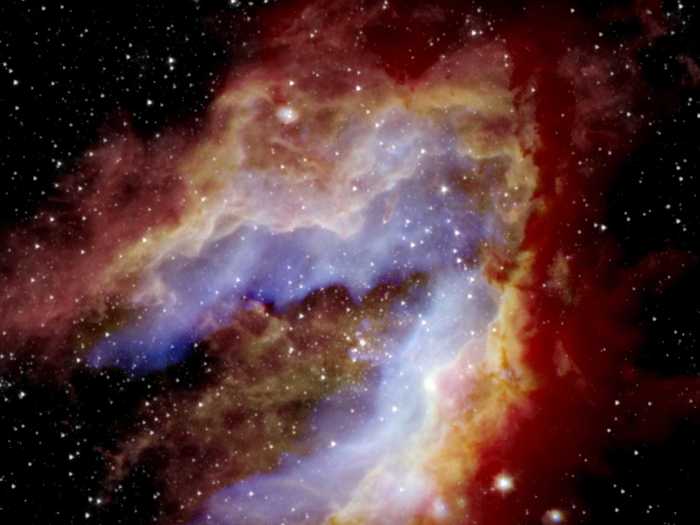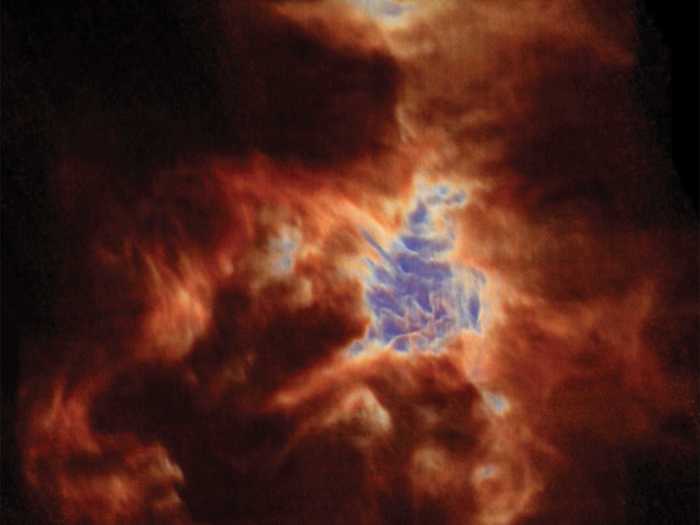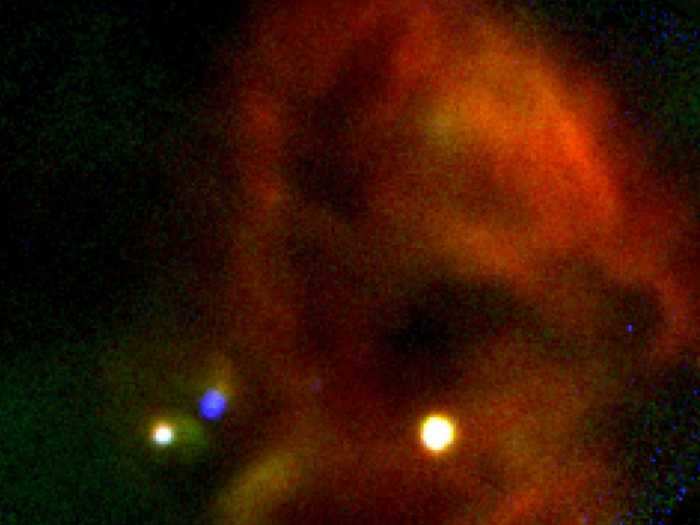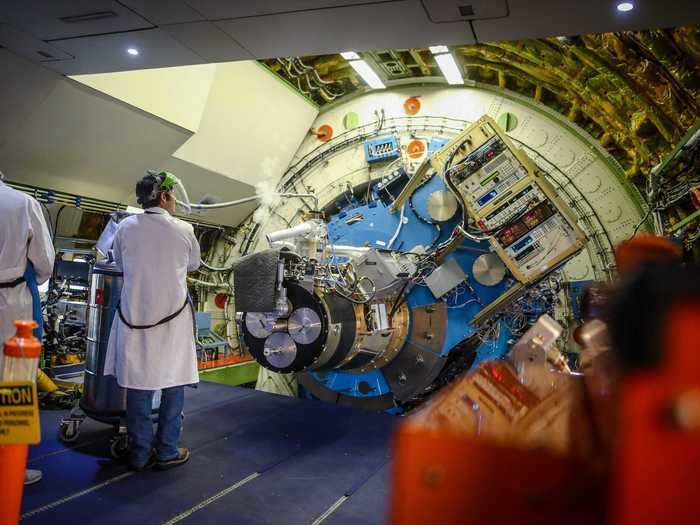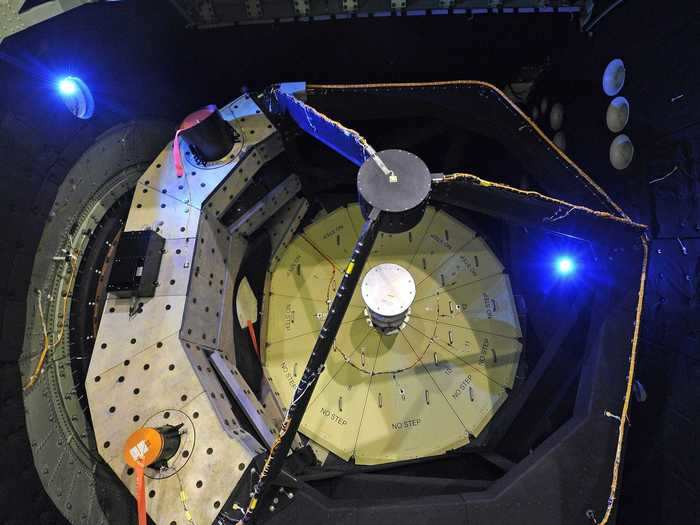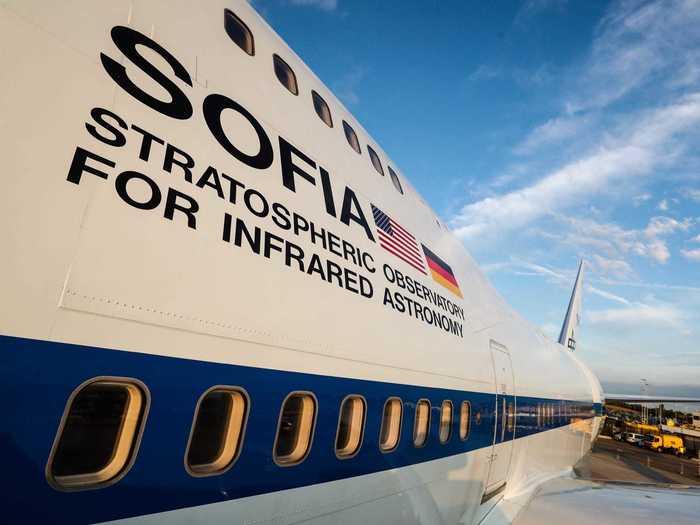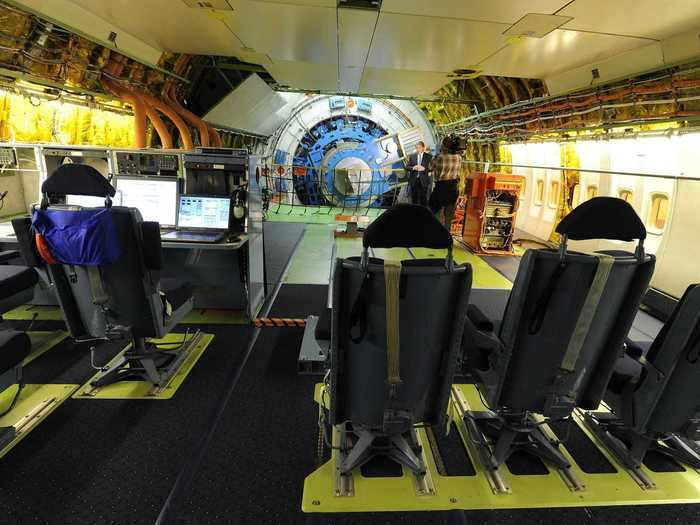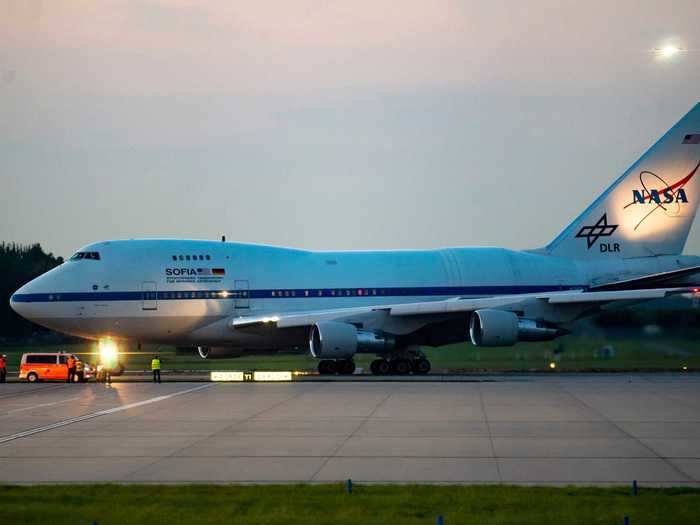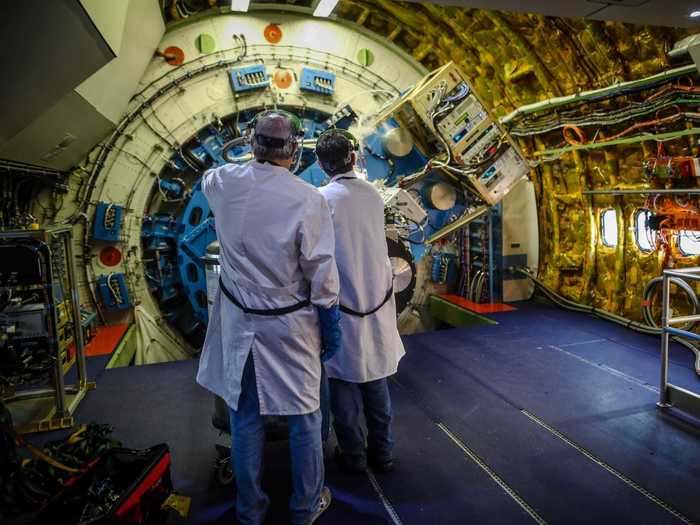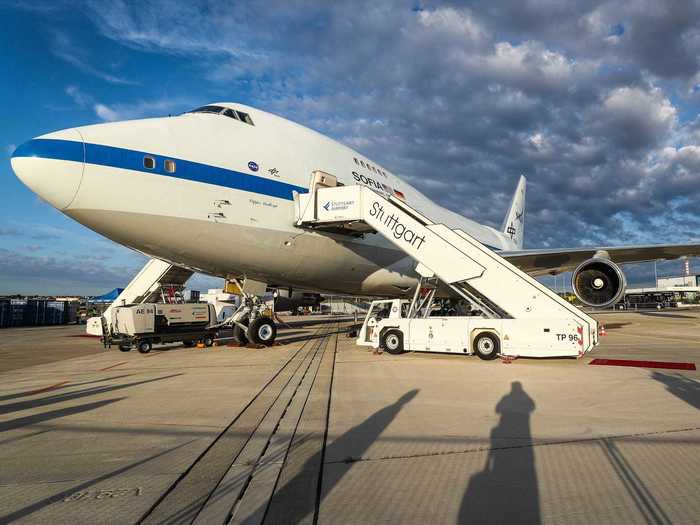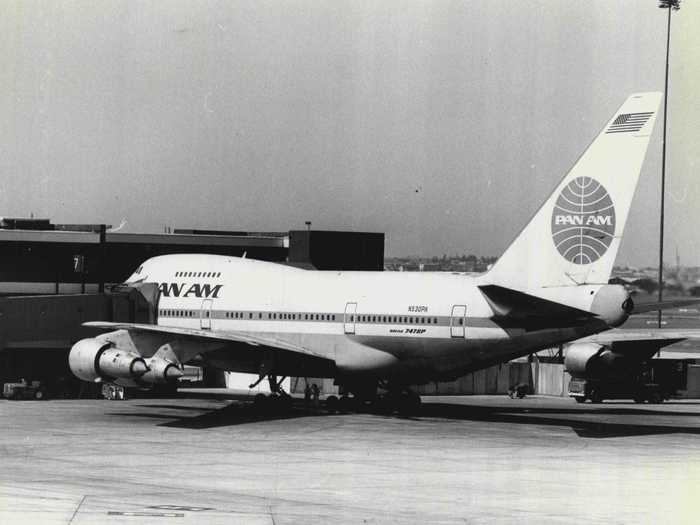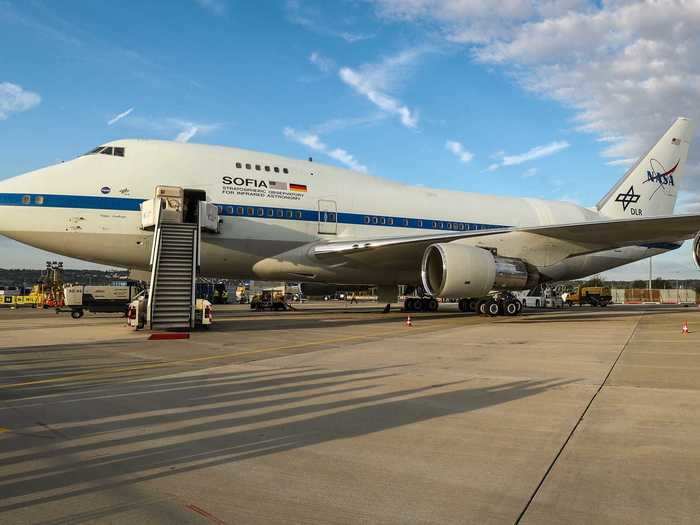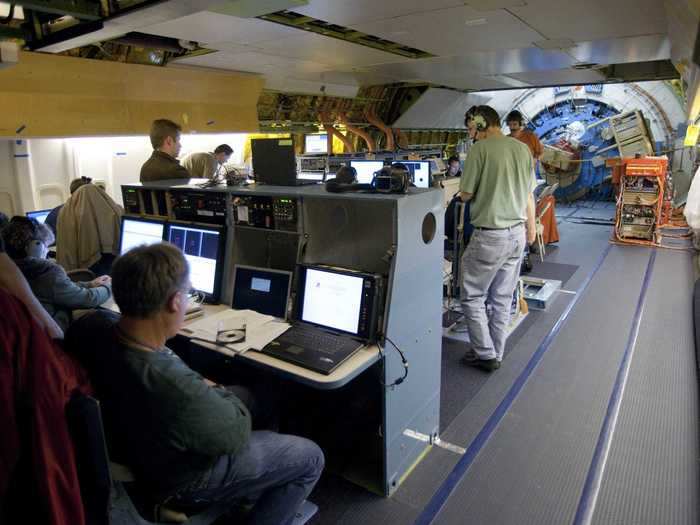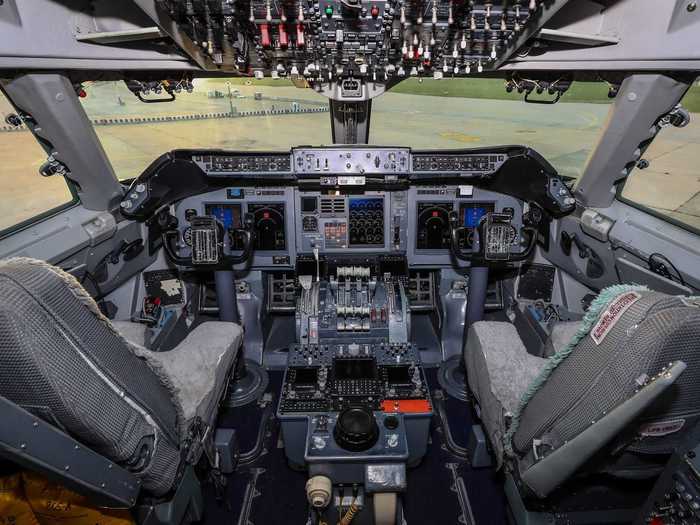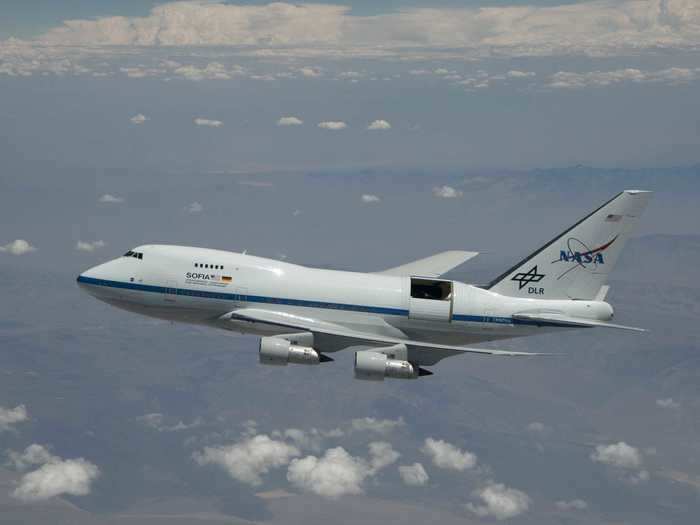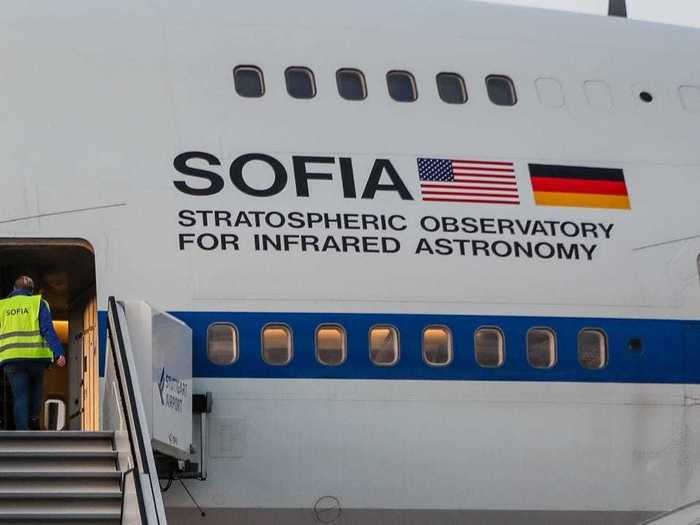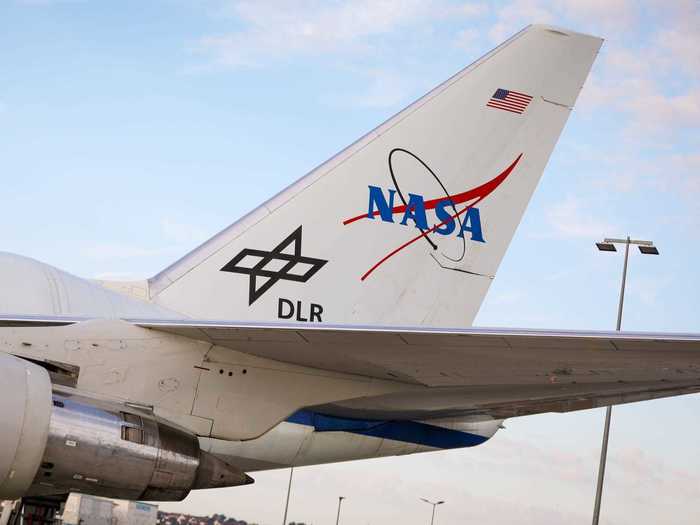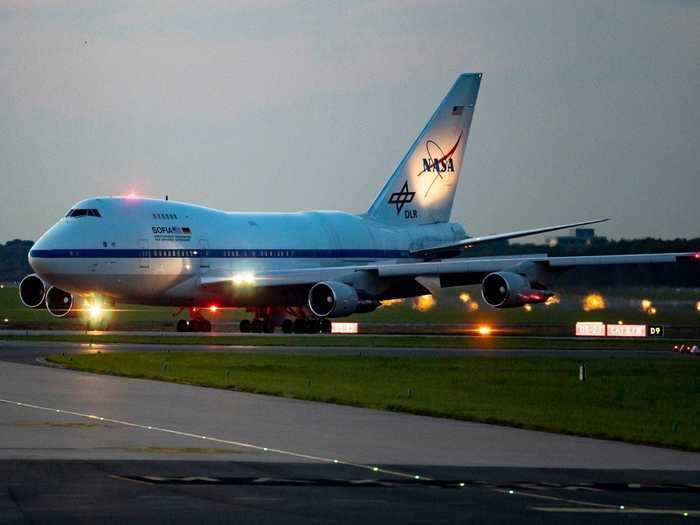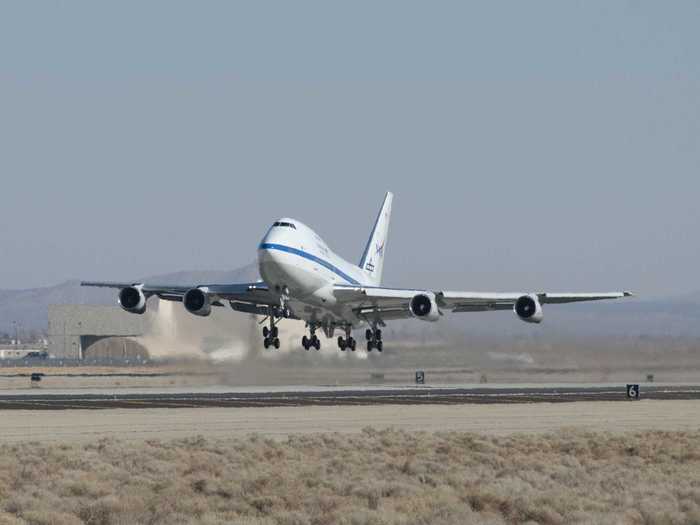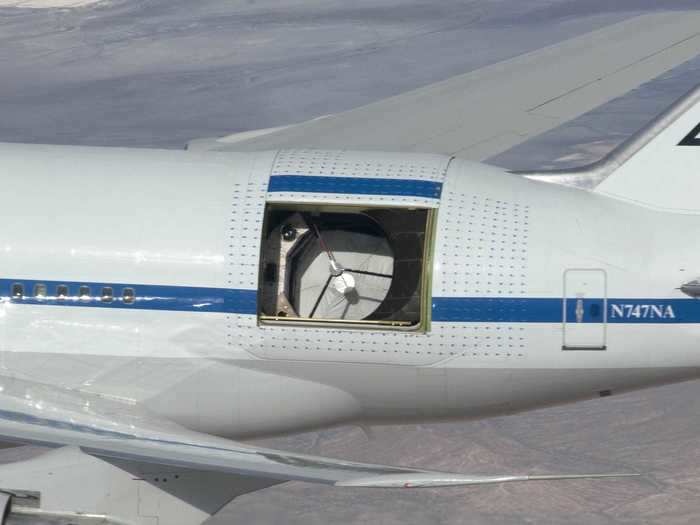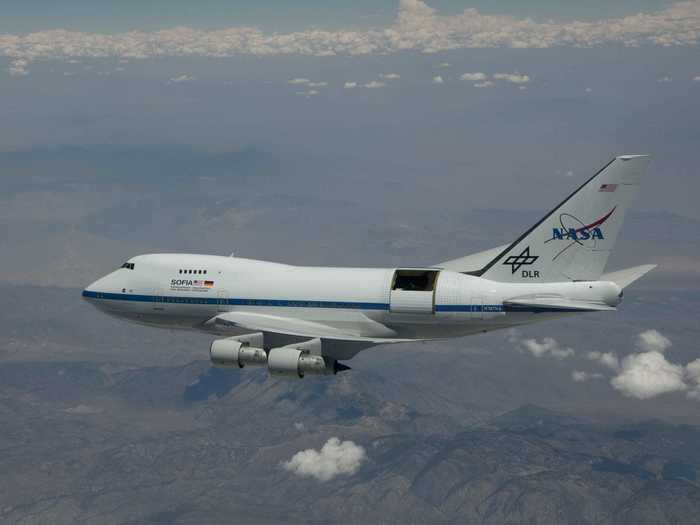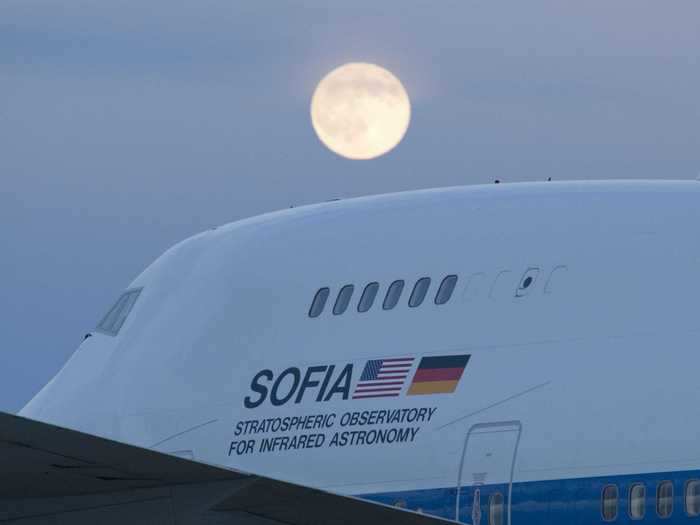NASA's flying observatory, nicknamed "SOFIA," just made one of its most consequential discoveries to date.NASA Photo/Jim_Ross/DVIDS & Skitch
- Data from NASA's flying observatory, nicknamed "SOFIA," was responsible for finding molecular water (H2O) on the moon.
- Housed inside the former Pan Am and United Airlines Boeing 747 is a far-infrared telescope that can detect star formations, distant galaxies, and the formation of new solar systems.
- The discovery is among the most consequential the jet has made in over 100 flights and a decade of service.
NASA just discovered molecular water on the moon, and humans didn't even need to be there to find it.
Scientists on Monday announced the finding of frozen H20 on the moon with data acquired from NASA's flying observatory, a heavily-modified Boeing 747SP. The Jumbo Jet comes equipped with a 2.7-meter far-infrared telescope capable of peering deep into space and seeing with infrared what cannot be seen with visible light.
The Stratospheric Observatory for Infrared Astronomy, or SOFIA for short, can be found flying around in the darkest hours of the night with its telescope pointed to the stars. Soaring as high as 45,000 feet on some missions, the telescope enjoys fewer obstructions than its counterparts on the ground.
The discovery is a major milestone for NASA's Artemis mission that will see humans return to the moon by 2024 and eventually Mars. Previously untouched planets in the final frontier will soon be welcoming their first humans if the program is successful.
The Boeing 747 is also proving to be a veritable jack of all trades and master of many. While airlines are finding they no longer have a purpose for the jet, it has found a second life in the cargo realm, as the world's largest private jet, and now, as a scientist.
Take a closer look at SOFIA, the Boeing 747 that just found water on the moon.
Meet SOFIA, short for Stratospheric Observatory for Infrared Astronomy, one of many aircraft that NASA employs for research missions.
NASA's Boeing 747SP flying observatory nicknamed "SOFIA."
NASA photo/Jim Ross/DVIDS
While it may look like a normal airliner on the outside, this Boeing 747SP, or 747 Special Performance, hides a secret in the form of a 2.7-meter reflecting far-infrared telescope.
NASA's Boeing 747SP flying observatory nicknamed "SOFIA."
ROBYN BECK/AFP/Getty
It's the largest aerial observatory in the world allowing NASA to get unobstructed views of the final frontier from high above Earth's surface.
NASA's Boeing 747SP flying observatory nicknamed "SOFIA."
Christoph Schmidt/picture alliance/Getty
While the scientific community has similar telescopes on the ground across the globe, SOFIA can soar above any potential obstructions in our atmosphere such as water vapor, which emits infrared radiation.
NASA's Boeing 747SP flying observatory nicknamed "SOFIA."
NASA Photo/Carla Thomas/DVIDS
A typical altitude for the jet is 45,000 feet, high in the troposphere above even most commercial jet traffic.
NASA's Boeing 747SP flying observatory nicknamed "SOFIA."
NASA photo/Jim Ross/DVIDS
The 10-hour science flights are also flown at night for that reason, as water vapor is lower than during the day. The longer the night, the better.
NASA's Boeing 747SP flying observatory nicknamed "SOFIA."
Christoph Schmidt/picture alliance/Getty
The mobile telescope can observe happenings over areas where placing a ground-based telescope wouldn’t be possible such as oceans or harsh terrain.
NASA's Boeing 747SP flying observatory nicknamed "SOFIA."
Christoph Schmidt/picture alliance/Getty
Once airborne, this door at the back of the fuselage opens for an unobstructed line of sight.
NASA's Boeing 747SP flying observatory nicknamed "SOFIA."
Christoph Schmidt/picture alliance/Getty
This isn't a quarter-operated telescope with someone peering through at the other end. Rather, this telescope sees in infrared wavelengths to see what can't be observed with visible light.
NASA's Boeing 747SP flying observatory nicknamed "SOFIA."
Christoph Schmidt/picture alliance/Getty
That includes star formations...
Images from NASA's Boeing 747SP flying observatory nicknamed "SOFIA."
NASA SOFIA Lim, De Buizer, & Radomski et al.; ESA Herschel/NASA JPL Caltech
Distant nebulae...
Images from NASA's Boeing 747SP flying observatory nicknamed "SOFIA."
NASA/SOFIA/upGREAT
And star forming regions.
Images from NASA's Boeing 747SP flying observatory nicknamed "SOFIA."
NASA/DLR:USRA/DSI:R./Shuping & W. Vacca/FORCAST team
Infrared can even see through obscurations, such as dust clouds.
NASA's Boeing 747SP flying observatory nicknamed "SOFIA."
Christoph Schmidt/picture alliance/Getty
Another benefit of the telescope is its ability to be updated with the latest technology more often than space-based telescopes.
NASA's Boeing 747SP flying observatory nicknamed "SOFIA."
ROBYN BECK/AFP/Getty
As SOFIA returns to the ground after every 10-hour flight, it can constantly be updated. space-based telescopes, however, cannot.
NASA's Boeing 747SP flying observatory nicknamed "SOFIA."
Christoph Schmidt/picture alliance/Getty
The hundreds of seats that once filled this plane have been replaced with millions of dollars worth of technology aiding in space exploration.
NASA's Boeing 747SP flying observatory nicknamed "SOFIA."
ROBYN BECK/AFP/Getty
Though based in California between the Armstrong Flight Research Center and Ames Research Center, this Boeing 747SP's subscribes to the "have plane, will travel" mantra.
NASA's Boeing 747SP flying observatory nicknamed "SOFIA."
Axel Heimken/picture alliance/Getty
Deployments often see the aircraft and its telescope venture to the Southern Hemisphere during the change of the seasons to take advantage of the longer nights.
NASA's Boeing 747SP flying observatory nicknamed "SOFIA."
Christoph Schmidt/picture alliance/Getty
While the aircraft itself is incredibly unique, the 747SP also has a fascinating history.
NASA's Boeing 747SP flying observatory nicknamed "SOFIA."
Christoph Schmidt/picture alliance/Getty
The Boeing 747SP was first requested by Pan American World Airways for longer-range flights, greater than current 747 models at the time.
Antony Matheus Linsen/Fairfax Media/Getty
This Boeing 747, which wears the registration number N747NA, was first acquired by Pan Am and then United Airlines before heading to NASA in 1997. Here's what it looked like in United's "Battleship Gray" livery before being painted in NASA colors.
NASA's Boeing 747SP flying observatory nicknamed "SOFIA."
NASA/AFP/Getty
This plane was built in 1977 and is now the largest flying telescope ever to be used by NASA.
NASA's Boeing 747SP flying observatory nicknamed "SOFIA."
Christoph Schmidt/picture alliance/Getty
Its acquisition was just the start of 13 years of installing the equipment and flight testing.
NASA's Boeing 747SP flying observatory nicknamed "SOFIA."
NASA photo/Tom Tschida/DVIDS
And of course, a new cockpit was fashioned for the jet.
NASA's Boeing 747SP flying observatory nicknamed "SOFIA."
Christoph Schmidt/picture alliance/Getty
Its first science flight took place on November 30, 2010.
NASA's Boeing 747SP flying observatory nicknamed "SOFIA."
NASA photo/Jim Ross/DVIDS
Both an American and German flag flies on the aircraft as NASA and the German Aerospace Center jointly operate the plane.
NASA's Boeing 747SP flying observatory nicknamed "SOFIA."
Christoph Schmidt/picture alliance/Getty
The Boeing 747 isn't the first aircraft to be used as an aerial telescope platform as the program dates back to 1965.
NASA's Boeing 747SP flying observatory nicknamed "SOFIA."
Christoph Schmidt/picture alliance/Getty
Aircraft ranging from Learjets to military transport aircraft were used before the current model was acquired.
NASA's Boeing 747SP flying observatory nicknamed "SOFIA."
Axel Heimken/picture alliance/Getty
In the decade that it's been flying, over 100 research flights have been launched.
NASA's Boeing 747SP flying observatory nicknamed "SOFIA."
NASA photo/Tony Landis/DVIDS
This is arguably the aircraft's most consequential discovery to date.
NASA's Boeing 747SP flying observatory nicknamed "SOFIA."
NASA Photo/Carla Thomas/DVIDS
NASA expects to keep the plane flying for at least 20 years from its launch.
NASA's Boeing 747SP flying observatory nicknamed "SOFIA."
NASA photo/Jim Ross/DVIDS
If humans do eventually go back to the moon, a Boeing 747 will have helped get us there.
NASA's Boeing 747SP flying observatory nicknamed "SOFIA."
NASA photo/Tom Tschida/DVIDS

